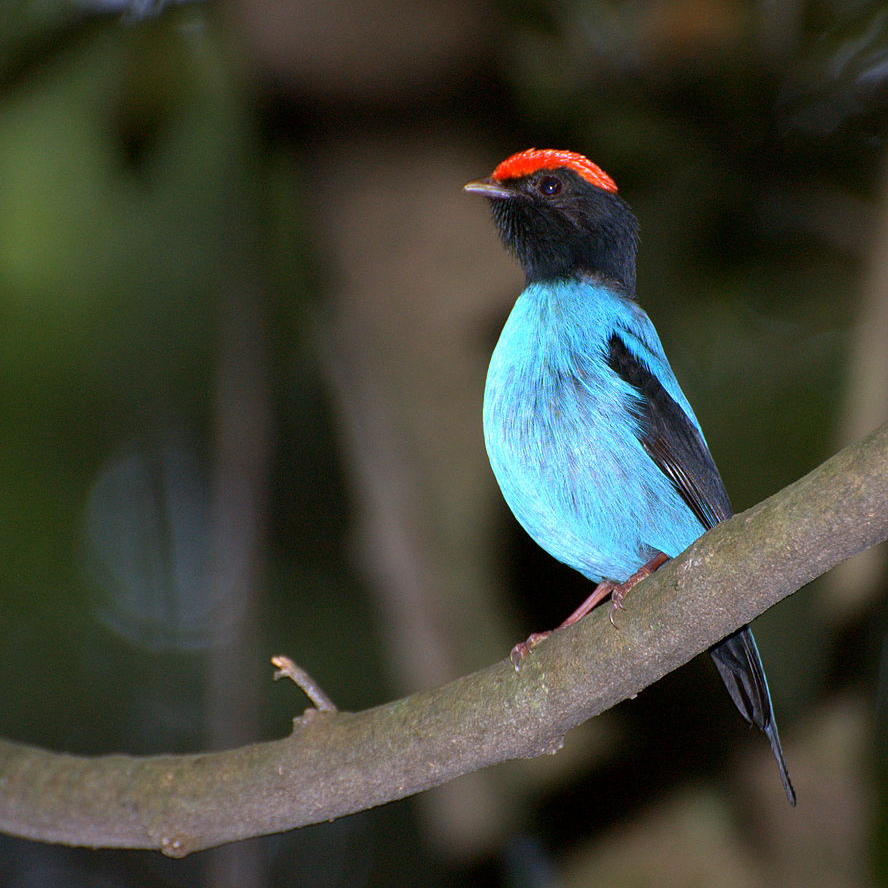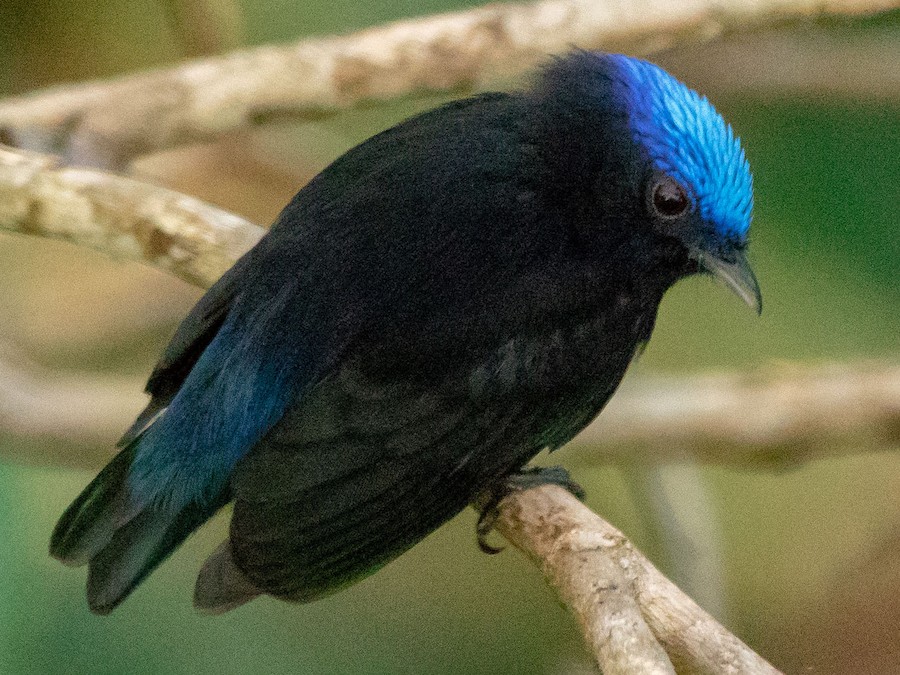
In the enchanting realm of avian wonders, the Blue-Crowned Manakin (Lepidothrix coronata) emerges as a captivating species belonging to the family Pipridae. With its mesmerizing appearance and intriguing behaviors, this bird captures the hearts of those fortunate enough to encounter it amidst the lush landscapes of its habitat.
Male Blue-Crowned Manakins weigh between 8.5 and 9.5 grams, showcasing a remarkable feat of nature with their brilliant blue crown. Their bodies are adorned with black plumage, while certain subspecies exhibit variations such as vibrant green plumage. Although the exact relationship between plumage colors and subspecies is not fully understood, the diversity within the species adds to its allure.

On the other hand, female Blue-Crowned Manakins are slightly heavier, averaging around 9.8 grams, with a maximum weight of 11.5 grams and a minimum weight of 8.5 grams. This species graces regions from Costa Rica to Peru, Bolivia, and northwestern Brazil, traversing a diverse range of habitats that contribute to its intriguing behavior and adaptation.

Primarily inhabiting the understory of tropical rainforests, the Blue-Crowned Manakin also makes use of mature second-growth forests. This adaptable species can be found at varying altitudes, from sea level up to an impressive elevation of 1,400 meters.

The breeding season of the Blue-Crowned Manakin spans from February to June. Males engage in lekking behavior, congregating in groups where they perform captivating displays to attract females. Once mating occurs, the male’s role in the breeding process concludes. The female takes on the responsibility of nest-building, crafting a delicate cup-shaped structure from fine fibers and lining it with leaves and moss. Positioned in the fork of a horizontal branch, the nest can be located up to 2 meters above the ground. The female lays two white eggs with reddish-brown spots, diligently incubating them alone for a period of 18 to 19 days. The fledgling process begins approximately 15 days after hatching, marking the commencement of the next generation’s journey.






